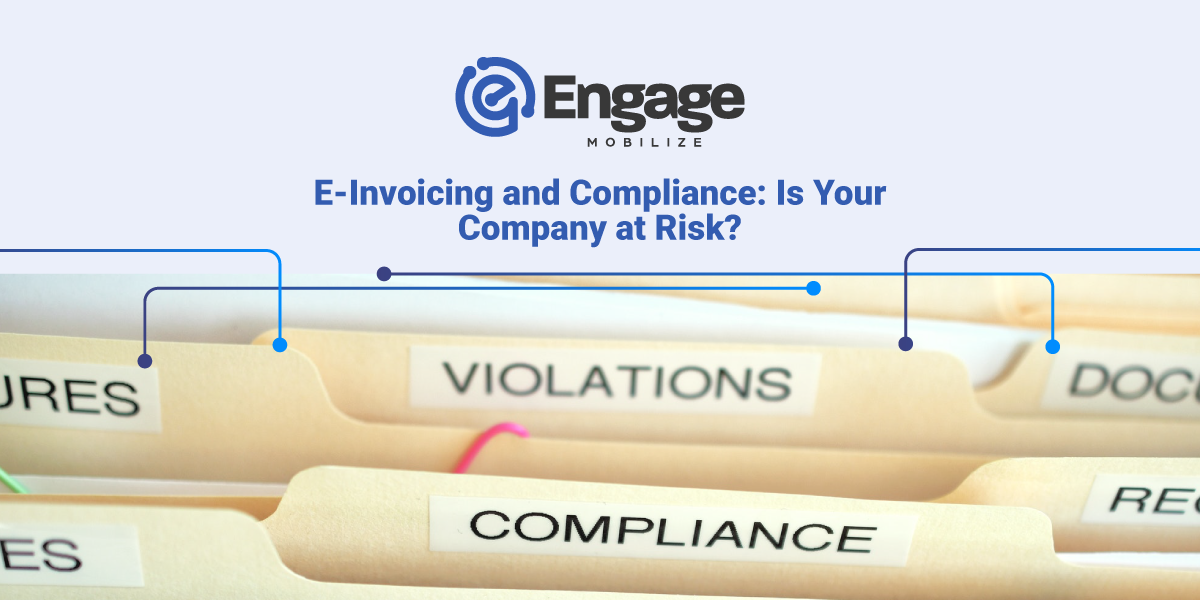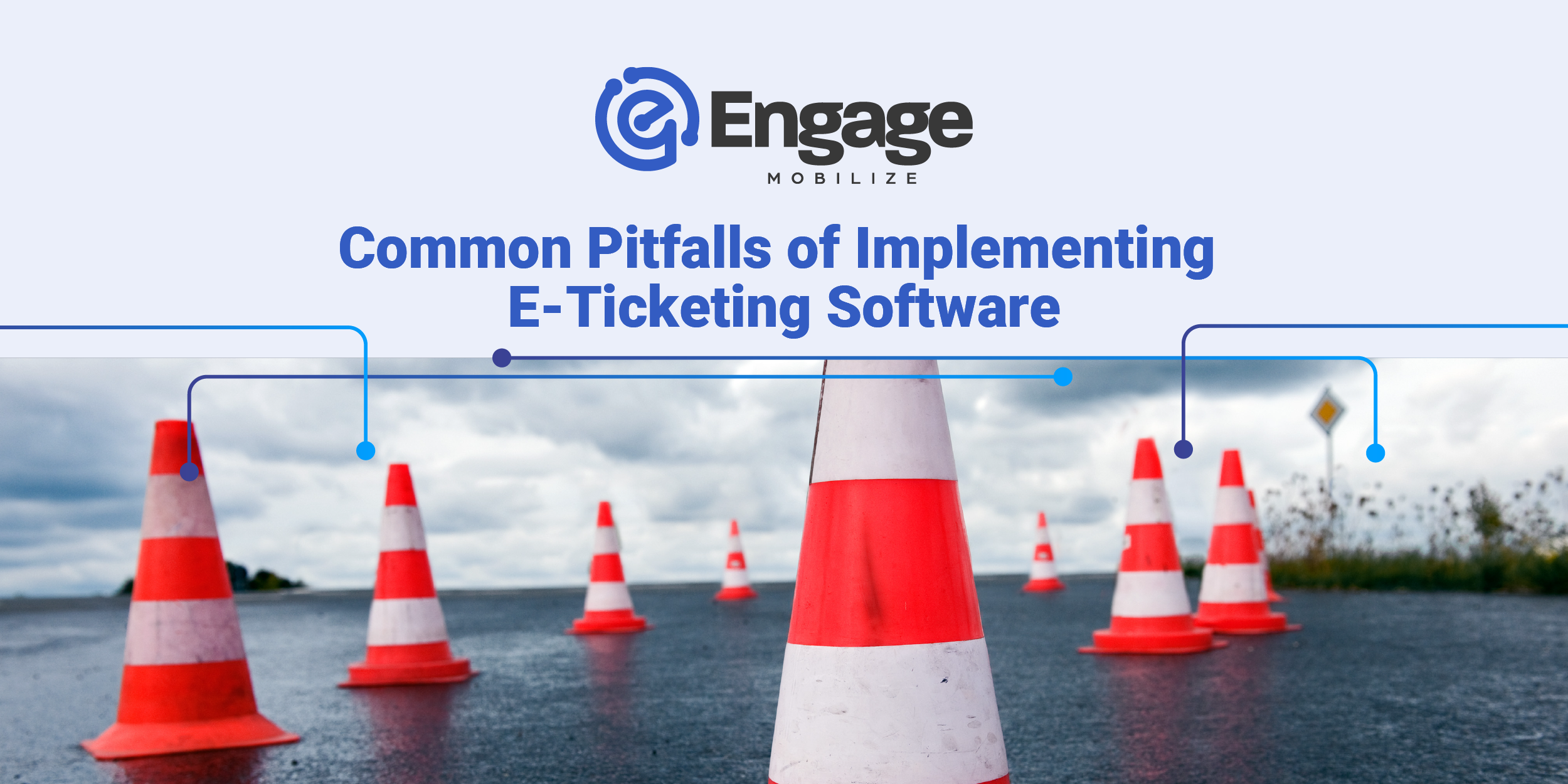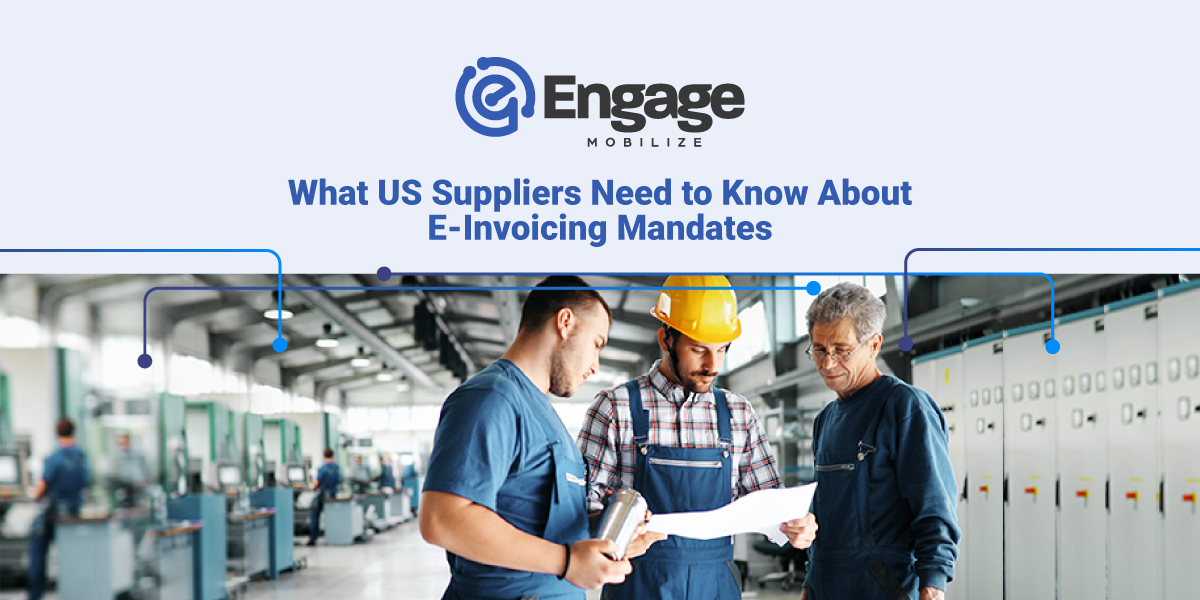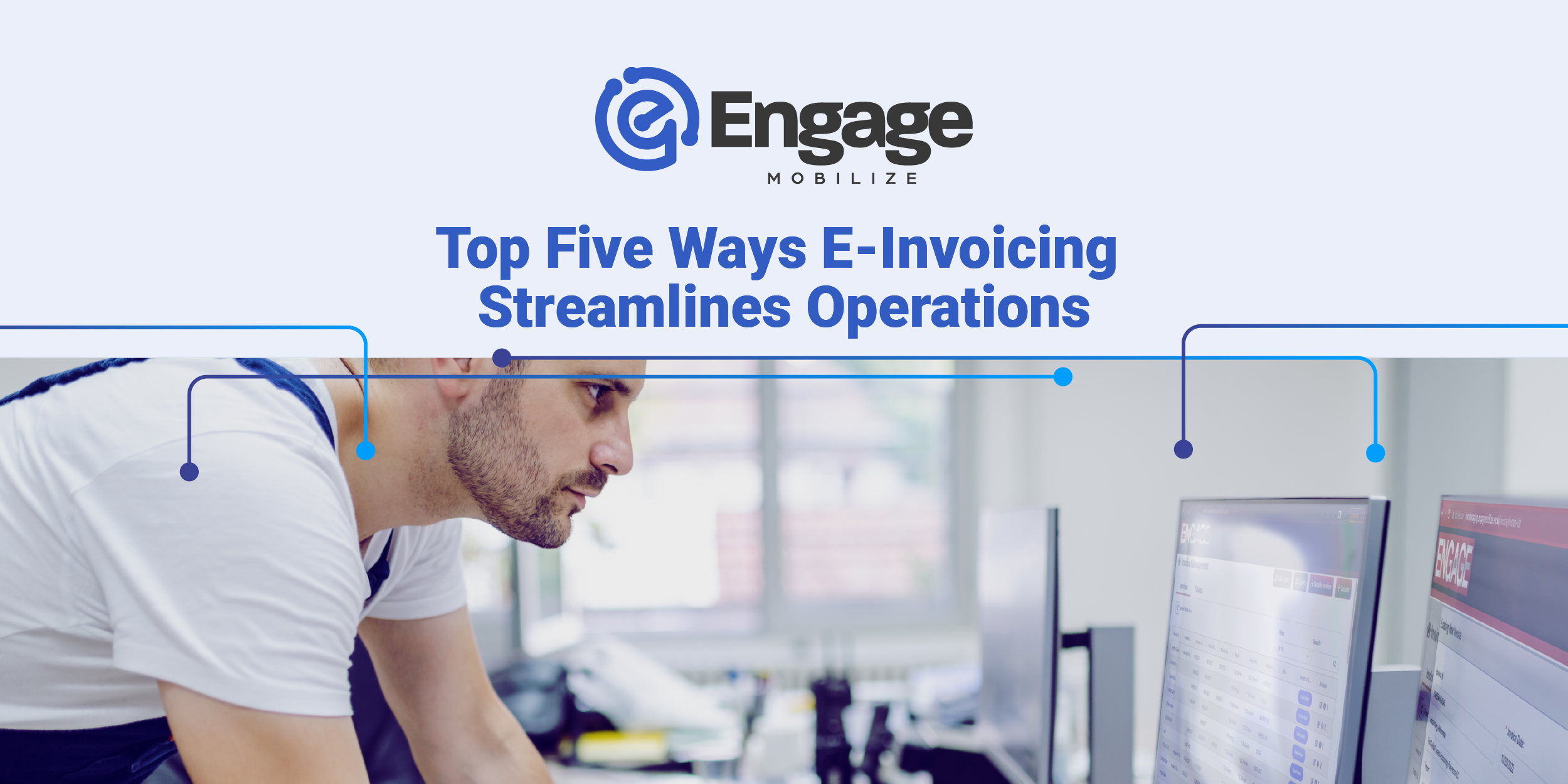E-Invoicing and Compliance: Is Your Company at Risk?

Regardless of whether you’re in the oil & gas industry, renewables, or some other aspect of energy and fuel production or delivery, the cost and complexity of doing business are on the rise. One big issue that concerns stakeholders is staying in compliance with government mandates.
For example, the US Office of Management and Budget (OMB) issued a mandate in 2015 requiring all companies with government contracts to implement an electronic invoicing system (E-Invoicing) within three years. The government estimates that this one change will increase transparency and efficiency while saving up to $260 million in cost.
Those companies who fail to comply with these mandates risk fines and loss of lucrative government contracts, and this only affects agreements between companies dealing with US government agencies. Enterprises with multiple locations and contracts with governments outside the US face a maze of evolving regulatory issues, invoicing systems, and tax concerns.
The risk involved with new or evolving requirements surrounding E-Invoicing alone only increases with the size and reach of your operation.
What are Invoicing Mandates?

An electronic invoicing platform is any method used to digitally generate, transmit, fulfill, and archive transactions. At the most basic, it merely means going paperless. However, mandates affect these processes all along the supply chain from obtaining raw materials to production to service delivery.
Mandates seek to standardize invoice requirements and platforms between vendors and customers, especially when the customer is a government agency or involved in a heavily regulated industry. These requirements vary from industry to industry and government to government, which only complicates matters if you’re a large, multi-national corporation.
Taking the example of the OMB mandate, the goal was to:
- Control costs,
- Increase transparency, and
- Improve visibility at every touchpoint.
The mandate itself involved using a shared service provider model, standardizing data and document formats and requirements, and tightening compliance with government regulations.
In an environment where approximately 19 million invoices are processed each year by a single customer – the US government – defining parameters and issuing mandates for conformity is necessary to control costs and avoid duplication, redundancy, and waste. It also promotes more effective oversight and transparency.
However, it only works if there are clearly defined goals, standards, and consequences for non-compliance.
Who’s Affected by E-Invoicing Mandates?
Mandates around e-Invoicing affect government agencies and companies alike, but not in the same ways. From the standpoint of government agencies, e-Invoicing mostly impacts tax authorities. By going paperless, these agencies are able to ensure a steady, predictable influx from both direct and indirect taxes necessary to fund the government. The predictability factor also helps to create budgets and estimate costs over time.
Businesses impacted by mandates must ensure that they are in compliance with tax requirements and other regulatory concerns. This is especially important to cover VAT gaps and other problems. Although adoption and rollout can be a complex process that impacts employees and business operations at all levels, it’s a necessary evil that will help them avoid audits, fines, and other penalties.
On the plus side, adopting the required e-Invoicing mandates will prevent business disruptions and contract termination. You’ll also receive correct reimbursements, refunds, and rebates, and you’ll get them faster.
Over the next three years, invoicing mandates will be in effect for at least 30 countries. In addition to those enterprises holding government contracts within the US, these mandates will affect inter-company and overseas transactions.
Plus, we all know mandates that begin at B2G level always trickle down to affect B2B business enterprises.
Identifying and Facing Compliance Challenges

The larger, more complex, and far-reaching your business, the greater the difficulty in maintaining compliance, sailing through audits, and avoiding penalties. However, the process is necessary if you want to expand your operations, or even stay in business in some cases.
As part of the bargain, you’ll also:
- Streamline business processes
- Standardize billing and delivery
- Improve efficiency and transparency
- Eliminate touchpoints
- Reduce risk
- Gain insight into spending
- Control costs
The goals of these mandates are to overcome challenges facing government agencies and inter-company transactions, including:
- Inconsistent transfer pricing: This leads to margin erosion and loss of revenue over time. Electronic invoicing addresses this problem through accurate pricing, reducing variance in pricing bands, and adapting to changing market conditions.
- Complex ERP landscapes: When you’re dealing with multiple ERPs, agencies, and regulations, maintaining visibility eats resources, wastes time, and increases the possibility of error. Adopting a digital invoicing system improves efficiency and eliminates the problem of human error by streamlining and automating the whole process
- Taxation: Adopting an automated invoicing system ensures that you’re accurately meeting your tax obligations. It also helps prevent issues like VAT leakage that increase the tax burden on government agencies and businesses.
- Rising costs: Controlling the cost of compliance with mandates and regulations is enough of an incentive for digital migration. However, E-Invoicing also controls the cost of doing business by addressing problems with taxation and margin erosion.
- Invoice quality: Lack of a standardized, electronic invoicing system means you’re at risk for generating or receiving low-quality invoices that are difficult to read and/or contain inaccurate information. Poorly constructed invoices may also be missing critical information regarding taxes, times, and other critical data.
In addition to mandates and regulatory compliance, you also have to ensure legal compliance. This involves such key issues as providing proof of the authenticity of origin and the integrity of the content. Recipients need to know that the invoice is authentic, is issued by someone with the authority to do so, and that security was ensured throughout each point of transfer.
Fully digital invoicing systems address or eliminate these issues. They also collect and parse data in real-time, which supports daily and long-term decision-making that’s rooted in data.
So, what goes into an effective, compliant e-Invoicing system?
To begin with, such systems should focus on these key areas:
- Making the whole process transparent and virtually touchless
- Centralizing transaction visibility
- Automating by invoice category according to rules and paths rather than from the ERP standpoint
- Ensuring global tax compliance by both transaction instance and enterprise
Adopting a Compliance-Ready E-Invoicing System?
- Although some specifics will vary for each country and agency, they’re likely to include these minimum requirements:
- Standardized document formats and content requirements
- Methods to validate document integrity and authority, such as Electronic data interchange (EDI) and digital signatures
- Frameworks or platforms to connect with government agencies Tax authority approvals or accreditations
- Country-specific data security, collection, and archiving standards, such as those mandated under the EU’s GDPR
- Written consent for digital transformation among all stakeholders
Although invoicing mandates are not yet in place everywhere – or with everyone – you might do business, it’s inevitable that these requirements will be almost universally applied in the not-so-distant future. That makes it imperative that you adopt such a system now rather than waiting to see if your enterprise will be affected at some time down the road. Assume that it will and plan ahead.
At a minimum, your system should provide support for:
- Global compliance
- 24/7/365 customer care
- Data validation
- Complete digitization of manual process
- Integration with existing ERPs and accounting systems
Before you begin implementing an electronic invoicing platform, you should look into contracting additional services if these services are not already available in-house.
- Compliance expertise: You need a dedicated, informed team to track current mandates, monitor compliance, and stay informed about changes in e-documentation for every location and organization you do business with. For example, India is in the process of implementing some very strict e-Invoicing mandates. Other countries are in consideration for establishing mandates of their own.
- Onboarding assistance: New systems require enterprise-wide preparation. It’s also important to ensure that all of your business partners are in the loop and prepared for changes.
- Cloud-based networking: Most companies already have at least a hybrid platform in place, but it’s important that you have a virtual network and storage configuration to ensure seamless, reliable, and secure contact with all of your B2G and B2B partners.
Final Thoughts
Even the most complex business model or procedure can be improved by adopting the right technology. However, that technology is best when it comes from a vendor who knows your industry and how to manage all the moving parts within.
Engage Mobilize digitalizes end-to-end financial processes related to:
- Oil & gas
- Energy
- Upstream
- Petroleum
Ensure that you’re able to meet invoicing mandates by scheduling a consultation with an Engage Mobilize team member today.
Are you ready to learn more?
We’re ready to talk to you about the specific cost savings, workflow efficiencies and data insights that come from taking your field operations digital.
Share this
Similar Stories

Common Pitfalls of Implementing E-Ticketing Software

What US Suppliers Need to Know About E-Invoicing Mandates
